 |
|
The Intelligencers
The Story of British Military
Intelligence up to 1914
by
Brigadier B. A. H. Parritt
Director, Intelligence Corps
|
|
 |
|
This is
the 1983 Second Edition (ex-Library) |
|
 |
 |
|
|
|
Publisher and place of
publication |
|
Dimensions in inches (to
the nearest quarter-inch) |
|
Ashford, Kent: Intelligence Corps Association |
|
6¼ inches wide x 9¾ inches tall |
| |
|
|
|
Edition |
|
Length |
|
1983 [2nd Ed.; first published 1971] |
|
[xvi] + 238 pages |
| |
|
|
|
Condition of covers |
|
Internal condition |
|
This volume is ex-Library. Original green
leatherette blocked in gilt on the spine. The covers are rubbed and the
spine ends and corners are bumped. |
|
This volume is ex-Library. There are remnants
of a lending schedule on the front free end-paper, together with a Library
stamp and a rectangular abraded patch from another removed label, which is
still sticky. There is a classification number on the Title-Page in
ballpoint pen (please see the image below) but no other markings I can see
and the text is clean throughout. There is some separation between the inner
gatherings. Please note that (as I believe is common with this Edition) there is no front free end-paper and the book opens to the
Half-Title page. |
| |
|
|
|
Dust-jacket present? |
|
Other
comments |
|
Yes: however, the dust-jacket is scuffed, rubbed and creased around the edges
and with a prominent one-inch tear on the top of the front panel (please see
the image below) . There is also a small stain on the front panel. |
|
An ex-Library volume though with
Library markings confined to the Half-Title and Title-Page page and clean text otherwise. |
| |
|
|
|
Illustrations,
maps, etc |
|
Contents |
|
Please see below for details |
|
Please see below for details |
| |
|
|
|
Post & shipping
information |
|
Payment options |
|
The packed weight is approximately
800 grams.
Full shipping/postage information is
provided in a panel
at the end of this listing.
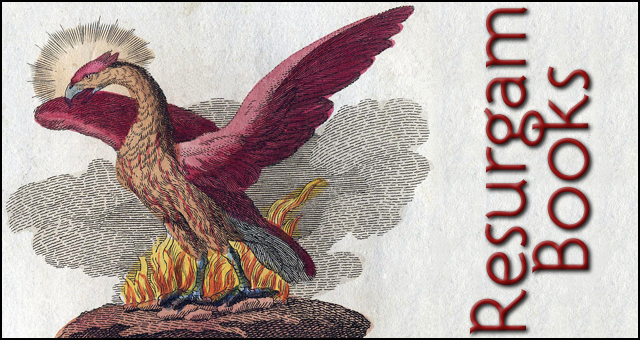 |
|
Payment options
:-
UK buyers: cheque (in
GBP), debit card, credit card (Visa, MasterCard but
not Amex), PayPal
-
International buyers: credit card
(Visa, MasterCard but not Amex), PayPal
Full payment information is provided in a
panel at the end of this listing. |
|
|
 |
|
  |
|
 |
 |
|
The Intelligencers
Contents
List of Illustrations
Foreword
Acknowledgements
One The Scoutmaster General
Two John Churchill
Three The Eighteenth Century
Four The Corps of Guides and the Depot of
Military Knowledge
Five The Peninsular War
Six The Great Peace 1815-54
Seven Major Thomas Best Jervis
Eight The Crimean War
Nine The Recriminations
Ten The Topographical and Statistical Department
Eleven Major Charles Wilson and the Formative
Years of the Intelligence Department
Twelve Intelligence in the Field
Thirteen The Sudan Wars
Fourteen Brackenbury, Ardagh and the Developing
Years of the Intelligence Department
Fifteen War in South Africa
Sixteen The Field Intelligence Department
Seventeen The Intelligence Corps
Eighteen The Growth of Professionalism
Nineteen The Planning Years
Bibliography
Illustrations
-
Page 23 A member of
the Canadian Intelligence Corps dressed in the
Uniform of the Canadian Corps of Guides. Photograph
courtesy of Major R. H. Murphy Commandant of the
Canadian Intelligence Corps. -
Page 27 The monument
erected by the citizens of New York which depicts
one of the young militiamen who captured Major John
Andre. The Officer in charge of British
Intelligence'. Photograph courtesy of the Curator,
Historical Society of the Tarrytowns.
-
Page 32 The monument
in Westminster Abbey which commemorates the brave
way Major John Andre went to his death.
Photograph courtesy of the Keeper of the Muniments,
Westminster Abbey. -
Page 35 The French
Corps of Guides who were "Flung into the Furnace at
Waterloo". -
Page 52 The Natal
Corps of Guides raised by the Honourable T. K.
Murray and Major David Henderson on the outbreak of
the South African War. Photograph from "With the
Flag to Pretoria" by H. W. Wilson, Harmsworth
Brothers 1901. -
Page 52 The Queens Own
Corps of Guides, British and Indian Officers, 1880.
Photograph courtesy of the National Army Museum
Sandhurst. -
Page 66 Major Thomas
Best Jervis. Prematurely retired Major of the Bengal
Engineers who founded the Topographical and
Statistical Department, from which the present
Ministry of Defence Directorate of Intelligence is
descended. Photograph from Thomas Best Jervis by W.
P. Jervis published by Elliot and Stock, 62,
Paternoster Row, 1898. -
Page 100 Major General
Sir Charles Wilson. His great contribution to the
establishment of the Intelligence Division was
clouded by his subsequent failure to save General
Gordon. Photograph from The Life of Major-General
Sir Charles William Wilson, by Sir Charles M.
Watson, published by John Murray, Albemarle St.
London, 1909. -
Page 140 Count
Gleichen with his Battalion in the Sudan. (Gleichen
is seated on the left with book and monocle).
Photograph courtesy of the National Army Museum,
Sandhurst. -
Page 140 Staff of the
Intelligence Department during the siege of
Kimberley. Photograph from "With the Flag to
Pretoria" by H. W. Wilson, Harmsworth Brothers 1901.
-
Page 151 Major Henry
Brackenbury RA. One of the Wolseley "Ring" whose
successful combination of active service and
intelligence appointments led to a seat on the Army
Council. Photograph courtesy of the Royal Artillery
Institution, Woolwich. -
Page 155 Major General
Sir John Grierson. The Gunner whose friendship in
1881 with an Indian Editor eventually resulted in
his becoming Director of Military Operations.
Photograph from the "Life of Sir J. M. Grierson" by
D. S. MacDiarmid, Constance & Coy 1923. Photograph
by Gale & Polden Ltd. -
Page 163 Major General
Sir John Ardagh. As Director of Military
Intelligence before the South African War he was
accused by many people of a "lack of preparation
which was almost treasonable". Photograph courtesy
of the Institution of Royal Engineers, Chatham.
-
Page 173 Lieutenant
Colonel R. G. Kekewich seated left and his staff
during the siege of Kimberley. These were four of
the original ten Intelligence Officers sent to South
Africa before war broke out. Captain O'Meara,
standing right, acted as Intelligence Officer during
the siege and Major Scott-Turner Royal Highlanders,
seated right, was killed leading a sortie out of the
besieged town. Photograph from "With the Flag to
Pretoria" by H. W. Wilson, Harmsworth Brothers 1901.
-
Page 176 Major General
Baden-Powell. One of the original ten Intelligence
Officers sent to South Africa before the outbreak of
war.
Photograph from "With the Flag to Pretoria" by H. W.
Wilson, Harmsworth Brothers 1901. -
Page 181 Colonel M. F.
Rimington Inniskilling Dragoons. Rimington formed
the Imperial Corps of Guides on the outbreak of the
South African War. The unit was known at the time as
an 'intelligence corps' also The Rimington's
'Tigers' from the pieces of wild cat fur they wore
in their hats. Photograph from "With the Flag to
Pretoria" by H. W. Wilson, Harmsworth Brothers 1901.
-
Page 186 Major D. P.
Driscoll DSO who formed the DriscolFs Horse as an
adjunct to the Field Intelligence Department.
-
Page 186 Lieutenant
Colonel F. H. Damant DSO who took over command of
the Rimington's Scouts on the departure of Colonel
Rimington and changed the title to Damant's Horse.
Photographs from "With the Flag to Pretoria" by H.
W. Wilson, Harmsworth Brothers 1901. -
Page 196 Scout Cycle
patrol on converted tandems using a railway line.
Photograph courtesy of the South African Government
Archives.
Page 209 Balloon used for scouting. Photograph from
"With the Flag to Pretoria" by H. W. Wilson,
Harmsworth Brothers 1901. -
Page 219 Picture and
description of Jan Smuts published by the Field
Intelligence Department in their 'black list' of
wanted men.
Photograph courtesy of the Royal United Service
Institution. -
Page 226 Major General
David Henderson. He formed the Natal Corps of
Guides, the Royal Flying Corps and sponsored the
Intelligence Corps. Photograph from "The Third
Service" by Air Marshal Sir Phillip Joubert de la
Ferte. Thames and Hudson 1955.
|
|
 |
 |
|
The Intelligencers
Excerpt:
. . . Captain Ironside who had
taken an Army interpretership in German and had learnt both Cape
Dutch and Africaans was therefore tasked to assume the identity of a
German-loving Boer and get himself enrolled in the German Army. This
he did and thereafter suffered all the mental agonies of spy. On one
occasion he nearly revealed himself when he was struck in the face
by a German officer because his oxen were misbehaving — a severe
test for the six foot four inch Highlander. After two years of
espionage work Ironside told the Germans that he wished to return to
his family and so impressed had they been with his services that
they presented him with the German Military Service Medal. Another
souvenir he brought back was a silver thaler, worth a few shillings,
which had been given by another officer as a tip to the "humble
German Soldier". Ironside wore it for years on a chain round his
neck.
Richard Meinertzhagen, the famous intelligencer whose exploits
during the First World War have been told so well by T. E. Lawrence
in his book 'The Seven Pillars of Wisdom', was also carrying out
espionage trips at this time. Meinertzhagen as a young officer in
the Royal Fusiliers was asked to go to the Crimea to discover the
details of a new fort being built by the Russians. At one point on
the tour he had left the road to get a good view of his target when
he was spotted and two soldiers came running forward to arrest him.
Meinertzhagen however, had planned for this crisis:
"Luckily I knew what to do. I rapidly unloosed my trousers and had
the satisfaction of squatting down for at least three minutes in
full view of the fort, whilst the soldiers appearing to understand
my embarrassment, and I suppose appreciating the fact that I was an
ignorant foreigner, watched from a respectful distance." But this
type of spy work which was co-ordinated by MO 3 and then MO 5 was
not really approved of by the General Staff and in 1909 when the
subject of espionage was reviewed officially, General Spencer Ewart,
who had replaced General Grierson as Director of Operations, asked
that the system be changed. In this year the deterioration in
Britain's relations with Berlin and the discovery that Germany was
establishing a spy network in England, caused the Government to set
up a sub-committee of the Committee of Imperial Defence to consider
what improvements could be made in the counter-intelligence system
of the United Kingdom. The Committee soon discovered that the laws
dealing with espionage were inadequate and that a co-ordinated
system to deal with foreign espionage was non-existent. They did not
however, confine themselves solely to questions of
counterintelligence, but also looked into Britain's own secret
service activities. Colonel J. E. Edmonds who was head of MO 5
(later the official historian of the First World War) explained that
"he was in charge of the section of the General Staff employed on
secret service", and it was this direct link between the General
Staff and espionage activities which was strongly deplored by
General Ewart, Ewart explained the system adopted by other
countries, and showed that any correspondence between Military
Attaches and Secret Service Agents was not carried on direct, but
through some intermediary. The General Staff were thus protected
against being detected in any dealings with spies.
"We have no machinery of this kind" General Ewart continued, "but it
could no doubt be organised. We require information regarding
espionage in this country so that we may keep suspicious aliens
under observation, and be able to lay our hands on them in time of
need. We also want to be in touch with foreigners with a view to
ascertaining if there are any stores of foreign arms or explosives
in this country." As a result of their deliberations the
sub-Committee concluded: "That the best method both of acquiring
information of what is being done by foreign agents in this country
and of procuring information from abroad, would be obtained by means
of a Secret Service Bureau which should be separate from any of the
Departments, but should at the same time be in close touch with the
Admiralty, War Office and Home Office. This Bureau would deal both
with counter-espionage, and serve as an intermediary between the
Admiralty and the War Office on the one hand, and agents that we
employ in foreign countries on the other ... the subcommittee
consider that the organising of this Bureau should be entrusted to
the Director of Military Operations in co-operation with the
Admiralty and the Commissioner of Police, and that it should be
undertaken without delay."
The Committee of Imperial Defence approved the recommendations and
at the next meeting of the sub-committee it was decided, after some
discussion, that the most junior man in the room should form the new
bureau. It was to be called the Special Intelligence Bureau, would
be part of MO 5 and be responsible to the Director of Operations.
Captain Vernon Kell, South Staffordshire Regiment was the "most
junior officer" and on 23 August 1909 he took possession of a tiny
office on the first floor of the War Office and began work. For a
year he was alone, with no records, no clerk and hardly any
furniture. The story of his success is, however, the story of the
present Security Service - MI5. In 1914 Kell was able to round up
every single German spy in Britain, less one, and thirty years later
when he retired as Director of MI 5, he had seen the organisation
grow from one office with limited access to the Director of Military
Operations, to the principal Service concerned with maintaining
British security, an autonomous department directly answerable to
the Prime Minister.
But the sub-committee of 1909 did not feel that there was any
pressing need to create a bureau to control their own British spies.
And it was not until 1912 that the Special Intelligence Section
(later MI 6) was formed to co-ordinate the activities of British
agents overseas. Commander Mansfield Smith Gumming RN was given the
task of raising this section and although a sailor he was also part
of the Directorate of Military Operations.
This combination of all aspects of intelligence and all military
planning into one department meant that the Director himself could
become a very influential person in Whitehall - a fact that was soon
realised by General Henry Wilson who succeeded General Ewart in
1910. Henry Wilson had served in the French Section of the
Intelligence Division as a major in 1897, first under General
Chapman and then under General Ardagh, but had left early -
according to his Biographer - "because he was offered an appointment
of Brigade Major". (In the Ministry of Defence Library copy of this
Memoir there is a typewritten piece of paper stuck to the first
page. It is signed by J. E. Edmonds (the Historian) and reads as
follows "Wilson was not tempted away from the Intelligence Division
by the offer of a Brigade-majorship. As we all knew at the time he
was 'fired out' by the Director of Military Intelligence General Sir
John Ardagh for 'being below the standard of education desirable in
a staff officer".)
But whatever Wilson's academic qualifications there is no doubt that
he foresaw that war with Germany was inevitable and also that
Britain and France would be Allies. He kept two large scale roller
maps on the wall opposite his desk, one showed the lines of
communication on the Franco-Belgian-German frontier, the other the
German-Austro-Hungarian-Russian Frontier. These maps he would
frequently use to point out the dangerous situation in Europe. He
made a personal reconnaissance of the Franco-Belgium area allotted
to the British Expeditionary Force and insisted that the Handbook on
the German Army was continually reviewed and kept up to date. German
Field Service Regulations were translated and given a wide issue, as
were handbooks on roads and billeting facilities in Northern France
and Belgium.
At one stage in 1911 Wilson asked his two intelligence assistants
Count Gleichen (ADMO 2) and Colonel Money (ADMO 3) to work out,
without consulting each other, when and where the first collision
would occur if Germany went to war with France. Using the known
capacity of the German railways and roads and an 'acquired' German
mobilisation plan the two Branches decided quite independently that
the first big clash would probably occur on the fourteenth day after
mobilisation near Montmedy. "Very odd" mused Henry Wilson "the
French General Staff have also calculated that the first big battle
will be on the fourteenth day of mobilisation about Montmedy." "This
was a wonderful coincidence" Count Gleichen has written - "But we
were all three wrong, a surprise Corps enabled the Germans to make
that huge turning movement north of the Meuse which, had it not been
for the little B.E.F. in the way would have rolled up the French
left and maybe altered the history of the World."
The title of the "planning years" well describes this period. It had
to be planning, as the Government would allow no actual expansion.
What a frustrating period it must have been for Service Commanders:
"Wherever I look, to China, India, Egypt, South Africa, Morocco and
to Europe, everything is restless and unsettled and everyone except
ourselves is getting ready for war," wrote General Wilson in his
diary on 25 November 1913. "This frightens me. Our territorials are
falling down - witness the Deputations of County Associations who
are going to Asquith tomorrow; our regulars are falling down -
witness our recruiting returns; our Special Reserve is a thing 'poor
rire'. And we are doing nothing." Yet in spite of the activities of
those idealistic members of Government who imposed the cold dead
hand of pacifism on service reforms, the Army and Navy did manage to
prepare for the coming war. The success of the Japanese against the
Russians, the Balkan Wars, the Dreyfus espionage scandal in France
and above all the growing militancy of Germany, all provided a
strong stimulus . . .
|
|
 |
|
  |
 |
|

Please note: to avoid opening the book out, with the
risk of damaging the spine, some of the pages were slightly raised on the
inner edge when being scanned, which has resulted in some blurring to the
text and a
shadow on the inside edge of the final images. Colour reproduction is shown
as accurately as possible but please be aware that some colours
are difficult to scan and may result in a slight variation from
the colour shown below to the actual colour.
In line with eBay guidelines on picture sizes, some of the illustrations may
be shown enlarged for greater detail and clarity.
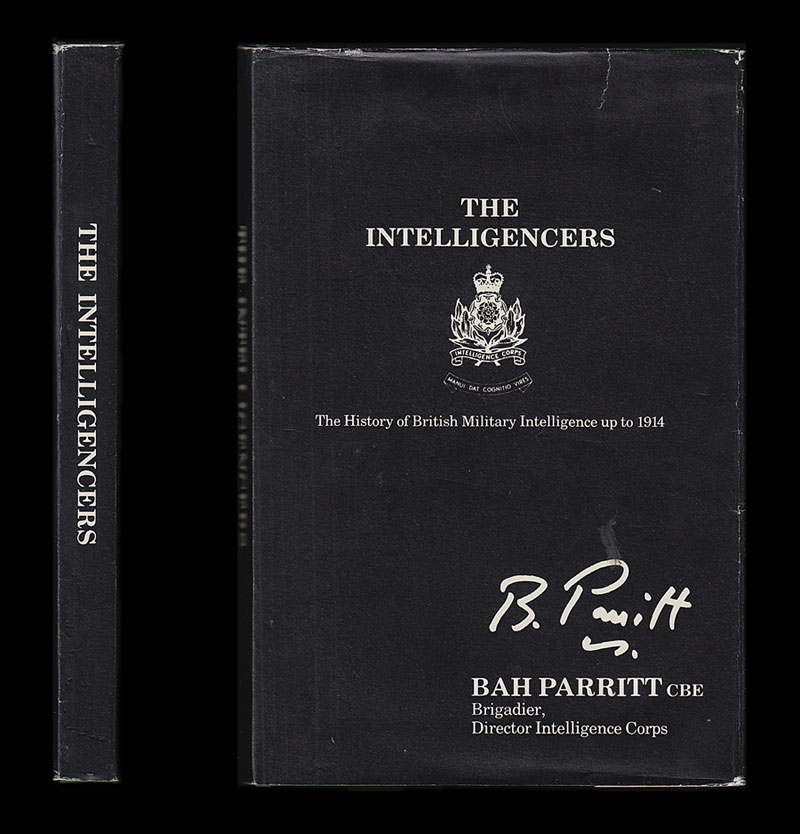
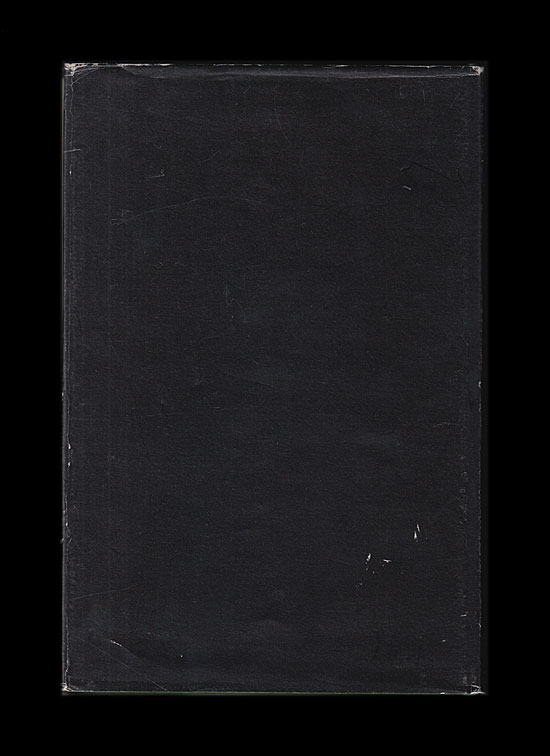

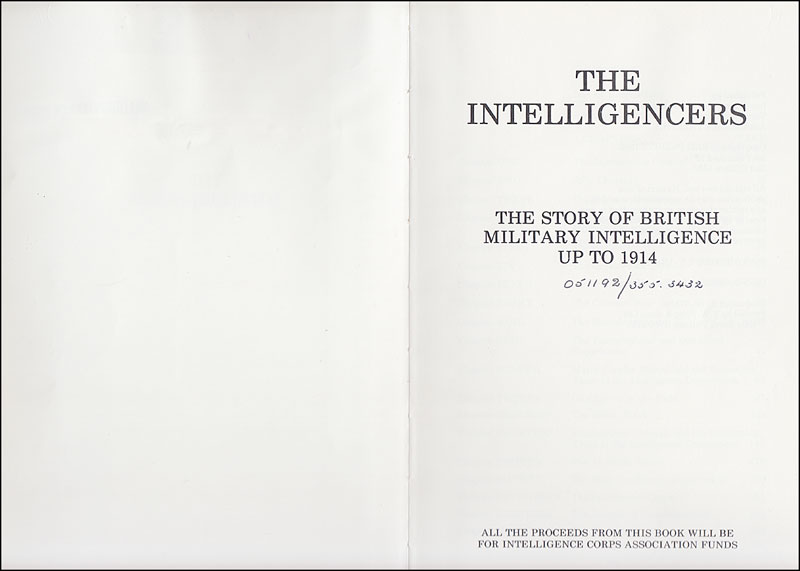
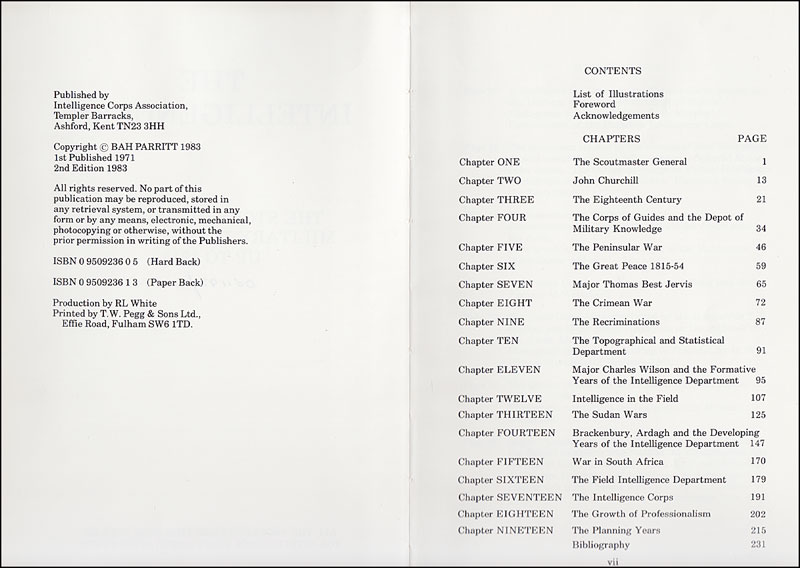
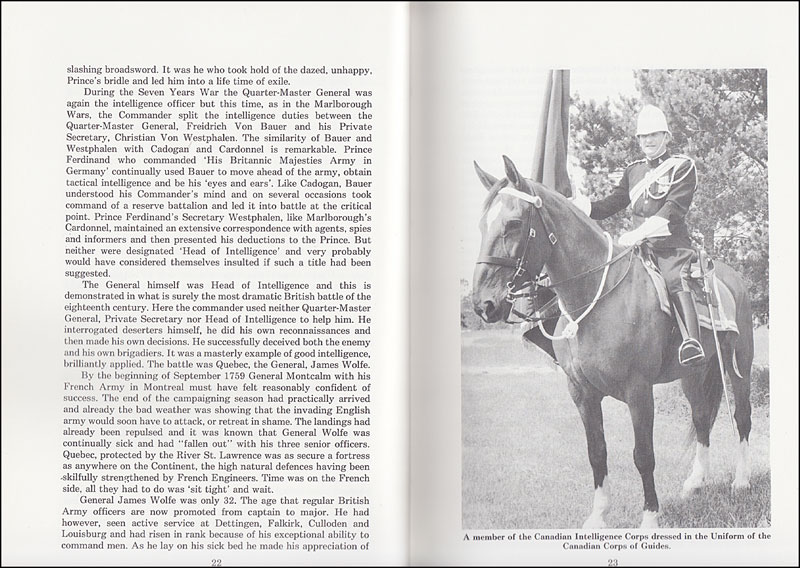
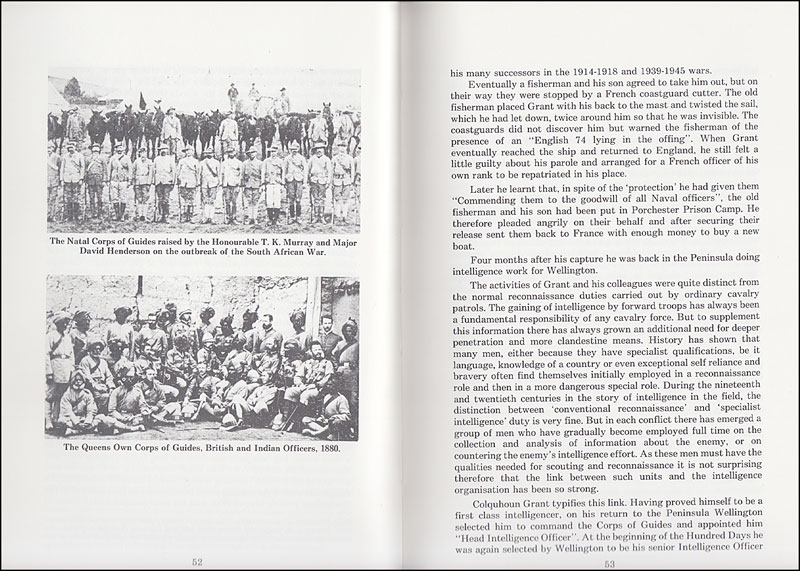
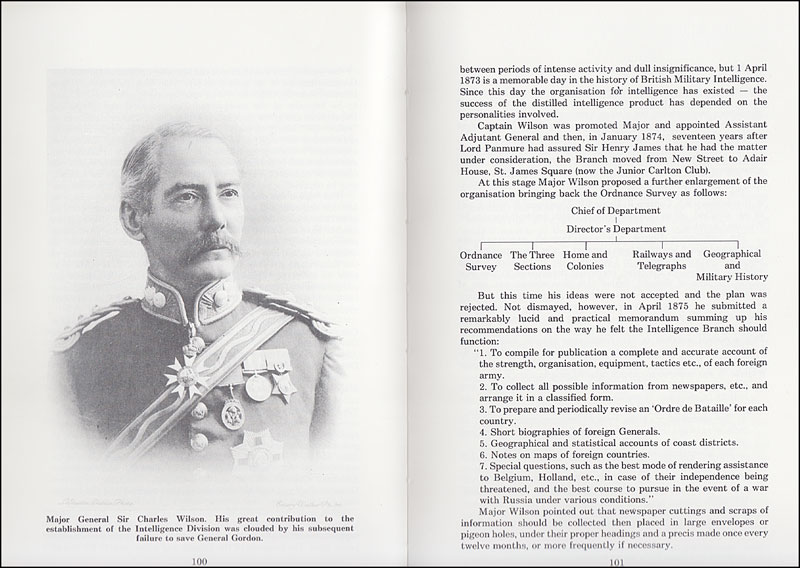
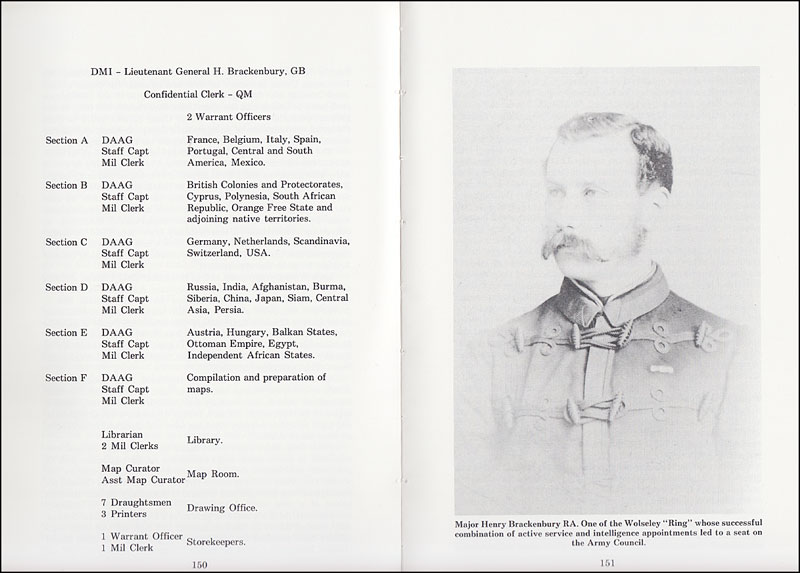
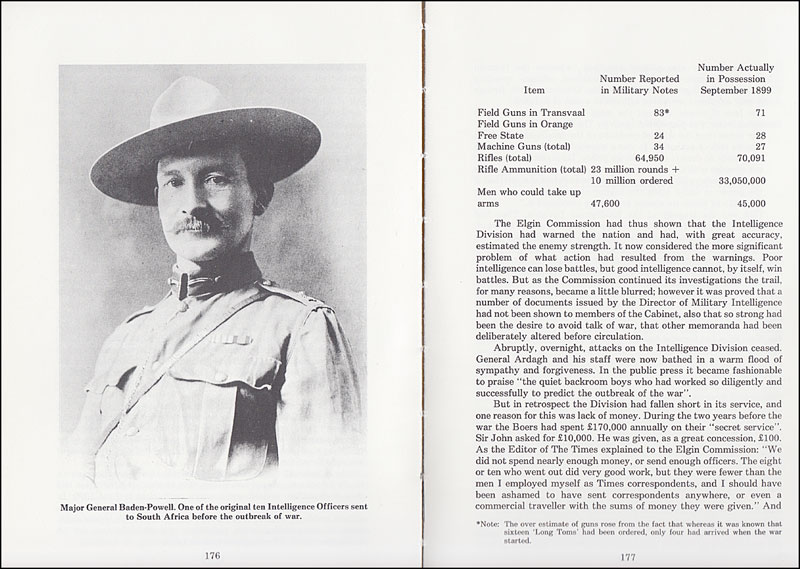
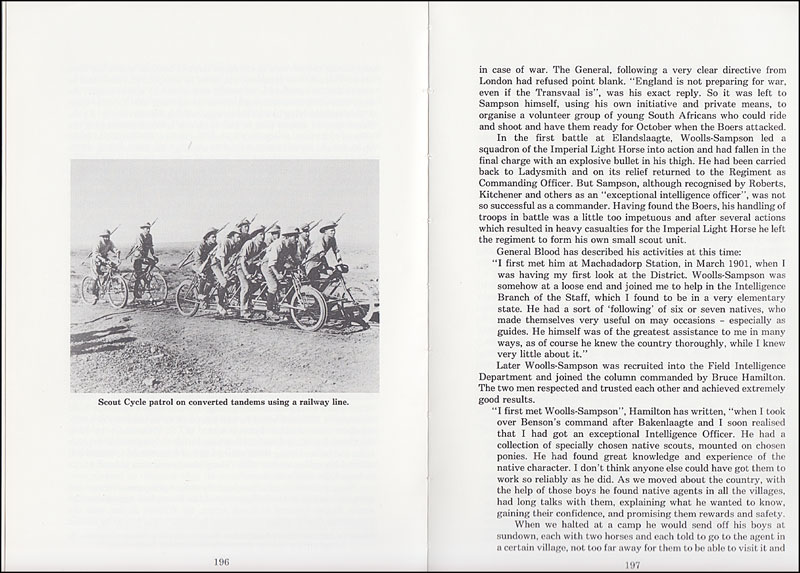
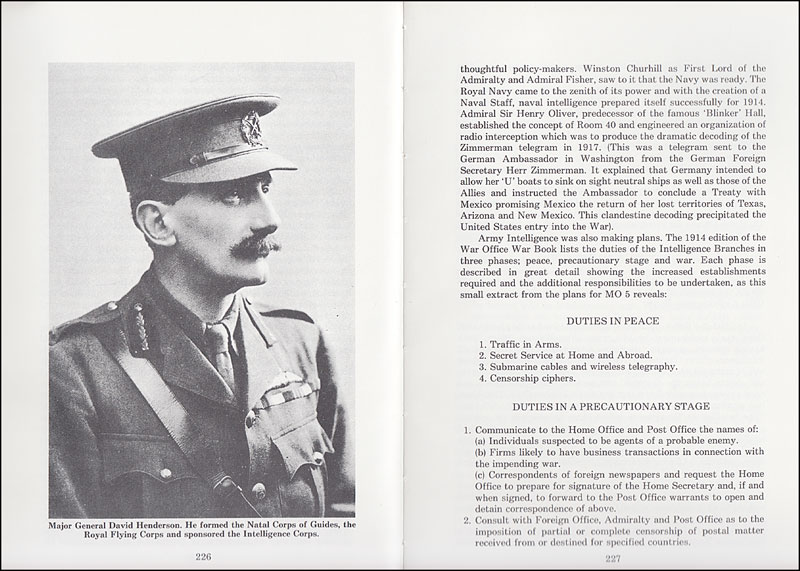
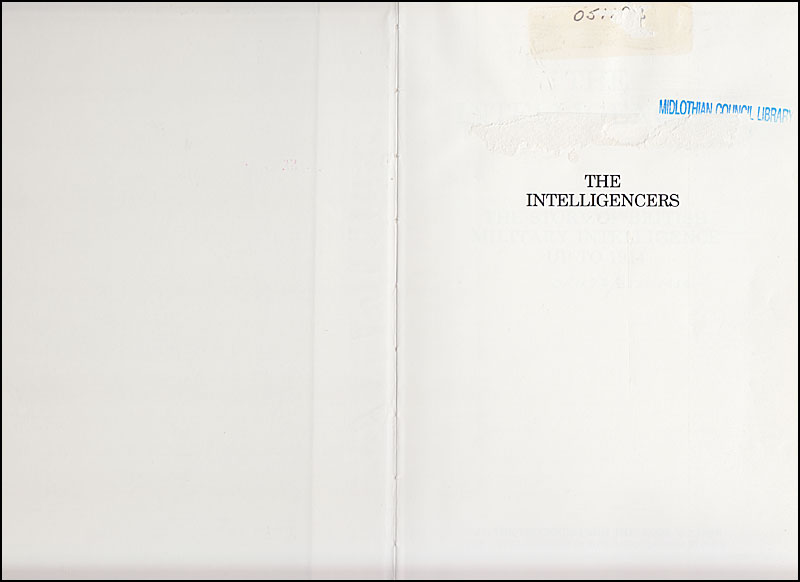
|
|
 |
|
 

IMPORTANT INFORMATION FOR PROSPECTIVE
BUYERS |
 |
|
U.K. buyers:
|
To estimate the
“packed
weight” each book is first weighed and then
an additional amount of 150 grams is added to allow for the packaging
material (all
books are securely wrapped and posted in a cardboard book-mailer).
The weight of the book and packaging is then rounded up to the
nearest hundred grams to arrive at the postage figure. I make no charge for packaging materials and
do not seek to profit
from postage and packaging. Postage can be combined for multiple purchases. |
Packed weight of this item : approximately 800 grams
|
Postage and payment options to U.K. addresses: |
-
Details of the various postage options (for
example, First Class, First Class Recorded, Second Class and/or
Parcel Post if the item is heavy) can be obtained by selecting
the “Postage and payments” option at the head of this
listing (above). -
Payment can be made by: debit card, credit
card (Visa or MasterCard, but not Amex), cheque (payable to
"G Miller", please), or PayPal. -
Please contact me with name,
address and payment details within seven days of the end of the auction;
otherwise I reserve the right to cancel the auction and re-list the item. -
Finally, this should be an enjoyable
experience for both the buyer and seller and I hope you will
find me very easy to deal with. If you have a question or query
about any aspect (postage, payment, delivery options and so on),
please do not hesitate to contact me, using the contact details
provided at the end of this listing.
|
|
 |
 |
|
International
buyers:
|
To estimate the
“packed
weight” each book is first weighed and then
an additional amount of 150 grams is added to allow for the packaging
material (all
books are securely wrapped and posted in a cardboard book-mailer).
The weight of the book and packaging is then rounded up to the
nearest hundred grams to arrive at the shipping figure.
I make no charge for packaging materials and do not
seek to profit
from shipping and handling.
Shipping can
usually be combined for multiple purchases
(to a
maximum
of 5 kilograms in any one parcel with the exception of Canada, where
the limit is 2 kilograms). |
Packed weight of this item : approximately 800 grams
| International Shipping options: |
Details of the postage options
to various countries (via Air Mail) can be obtained by selecting
the “Postage and payments” option at the head of this listing
(above) and then selecting your country of residence from the drop-down
list. For destinations not shown or other requirements, please contact me before buying.
Tracked and "Signed For" services are also available if required,
but at an additional charge to that shown on the Postage and payments
page, which is for ordinary uninsured Air Mail delivery.
Due to the
extreme length of time now taken for deliveries, surface mail is no longer
a viable option and I am unable to offer it even in the case of heavy items.
I am afraid that I cannot make any exceptions to this rule.
|
Payment options for international buyers: |
-
Payment can be made by: credit card (Visa
or MasterCard, but not Amex) or PayPal. I can also accept a cheque in GBP [British
Pounds Sterling] but only if drawn on a major British bank. -
Regretfully, due to extremely
high conversion charges, I CANNOT accept foreign currency : all payments
must be made in GBP [British Pounds Sterling]. This can be accomplished easily
using a credit card, which I am able to accept as I have a separate,
well-established business, or PayPal. -
Please contact me with your name and address and payment details within
seven days of the end of the auction; otherwise I reserve the right to
cancel the auction and re-list the item. -
Finally, this should be an enjoyable experience for
both the buyer and seller and I hope you will find me very easy to deal
with. If you have a question or query about any aspect (shipping,
payment, delivery options and so on), please do not hesitate to contact
me, using the contact details provided at the end of this listing.
Prospective international
buyers should ensure that they are able to provide credit card details or
pay by PayPal within 7 days from the end of the auction (or inform me that
they will be sending a cheque in GBP drawn on a major British bank). Thank you.
|
|
 |
 |
|

(please note that the
book shown is for illustrative purposes only and forms no part of this
auction)
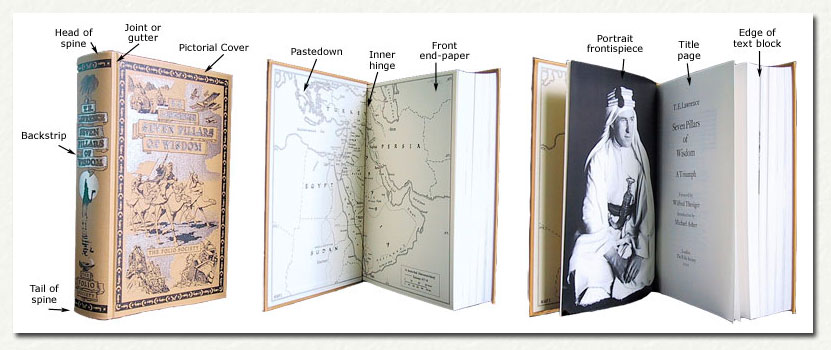
Book dimensions are given in
inches, to the nearest quarter-inch, in the format width x height.
Please
note that, to differentiate them from soft-covers and paperbacks, modern
hardbacks are still invariably described as being ‘cloth’ when they are, in
fact, predominantly bound in paper-covered boards pressed to resemble cloth. |
|
 |
 |
|

Fine Books for Fine Minds |
I value your custom (and my
feedback rating) but I am also a bibliophile : I want books to arrive in the
same condition in which they were dispatched. For this reason, all books are
securely wrapped in tissue and a protective covering and are
then posted in a cardboard container. If any book is
significantly not as
described, I will offer a full refund. Unless the
size of the book precludes this, hardback books with a dust-jacket are
usually provided with a clear film protective cover, while
hardback books without a dust-jacket are usually provided with a rigid clear cover.
The Royal Mail, in my experience, offers an excellent service, but things
can occasionally go wrong.
However, I believe it is my responsibility to guarantee delivery.
If any book is lost or damaged in transit, I will offer a full refund.
Thank you for looking.
|
|
 |
 |
|
Please also
view my other listings for
a range of interesting books
and feel free to contact me if you require any additional information
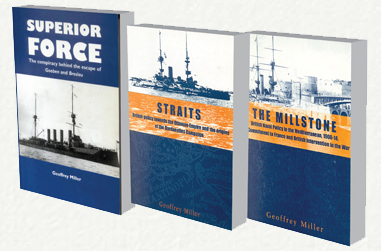

Design and content © Geoffrey Miller |
|
 |
|
|
|